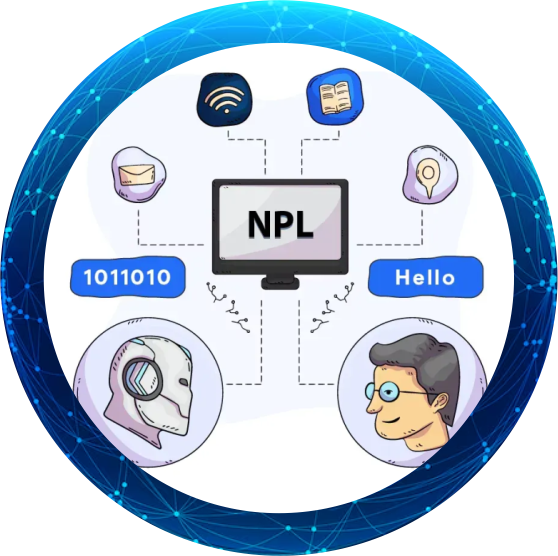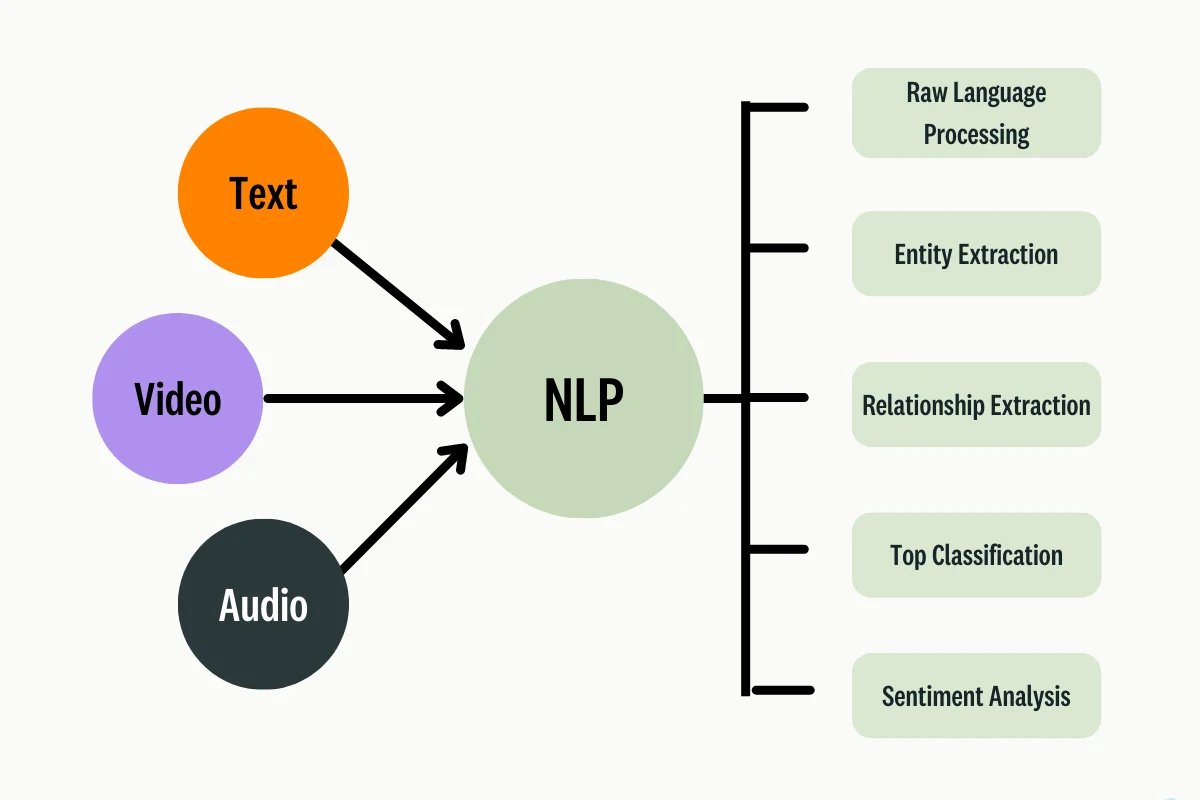Natural Language Processing (NLP)


in Data Science and AI
NLP bridges the gap between human language and machines, enabling them to read, understand, and generate text and speech.
It powers essential applications like chatbots, virtual assistants, sentiment analysis, machine translation, and more.
NLP is critical for extracting insights from unstructured text data, which forms the majority of human communication.
In business and data science, NLP is used for automated document processing, feedback analysis, and trend detection.
Modern AI models like GPT, BERT, and T5 are built on NLP principles and Transformer architectures.
NLP enables voice-based interfaces and accessibility tools, expanding how users interact with software and services.
NLP drives innovation in healthcare (clinical notes), finance (report summarization), and law (contract analysis).
NLP supports search engines, recommendation systems, and even fraud detection through pattern recognition.
It is key to multilingual AI, making global communication seamless across languages.
Understanding NLP equips learners with the skills to build intelligent language-aware applications in today’s AI ecosystem.

Module 1: Introduction to NLP
What is NLP? Definition and goals
Applications of NLP in real-world systems
Challenges in NLP (ambiguity, context, domain)
Structured vs unstructured data
Text classification vs sequence-to-sequence tasks
Module 2: Text Preprocessing
Text normalization:
Lowercasing, punctuation removal
Stop word removal
Tokenization (word-level, subword-level, sentence-level)
Stemming vs Lemmatization
Removing noise and special characters
Spelling correction and slang handling
Module 3: Text Representation Techniques
Bag of Words (BoW)
Term Frequency-Inverse Document Frequency (TF-IDF)
Word embeddings:
Word2Vec (CBOW & Skip-gram)
GloVe
FastText
Document embeddings and sentence vectors
Module 4: Syntax and Parsing
Part-of-Speech (POS) tagging
Named Entity Recognition (NER)
Dependency parsing
Constituency parsing
Chunking and shallow parsing
Module 5: Language Modeling
What is a language model?
N-gram models and their limitations
Perplexity and smoothing
Neural language models:
RNN, LSTM, GRU
Transformer basics
Module 6: Sentiment Analysis & Text Classification
Binary and multi-class sentiment classification
Rule-based vs ML-based approaches
Logistic regression, Naive Bayes, SVM
Deep learning for classification (CNN, RNN)
Evaluation metrics: accuracy, F1, precision, recall
Module 7: Sequence Modeling
Sequence labeling: NER, POS tagging
Sequence-to-sequence tasks: translation, summarization
RNNs and LSTMs in sequence modeling
Encoder-decoder architecture
Module 8: Machine Translation
Rule-based and Statistical Machine Translation (SMT)
Neural Machine Translation (NMT)
BLEU score and evaluation metrics
Transformer-based translation models
Module 9: Topic Modeling
Latent Semantic Analysis (LSA)
Latent Dirichlet Allocation (LDA)
NMF (Non-negative Matrix Factorization)
Visualizing and interpreting topics
Use in document clustering and trend analysis
Module 10: Question Answering & Chatbots
Types of QA systems: extractive vs generative
QA datasets (SQuAD, HotpotQA)
Contextual understanding using BERT
Chatbot architecture:
Rule-based
Retrieval-based
Generative (transformer-based)
Module 11: Transformer Models in NLP
Transformer architecture deep dive
Pre-trained models:
BERT, RoBERTa, DistilBERT
GPT, T5, XLNet, ALBERT
Fine-tuning vs feature-based approaches
Hugging Face Transformers library
Module 12: Information Extraction & Text Mining
Named Entity Recognition (NER) revisited
Relation extraction
Event and fact extraction
Text summarization:
Extractive vs abstractive
Keyword extraction (RAKE, TextRank)
Module 13: Multilingual NLP
Cross-lingual embeddings
Multilingual BERT (mBERT)
Translation tools and datasets
Transfer learning across languages
Low-resource language modeling
Module 14: Evaluation and Ethics in NLP
Model evaluation metrics for NLP tasks
Hallucination and factual consistency
Bias and fairness in language models
Toxicity detection and content moderation
Ethical data sourcing and annotation
Module 15: Tools, Frameworks, and Libraries
NLTK and SpaCy
Gensim for topic modeling
Hugging Face Transformers
OpenAI and Cohere APIs
LangChain for LLM-powered NLP
Module 16: Projects & Case Studies
Sentiment analysis on real-world reviews
Resume/job description matching engine
Customer support chatbot using RAG
Text summarizer using BERT
Multilingual Q&A system

